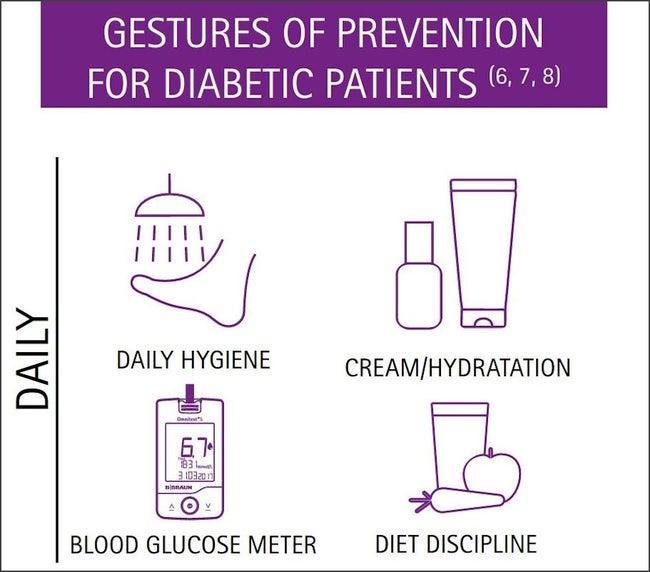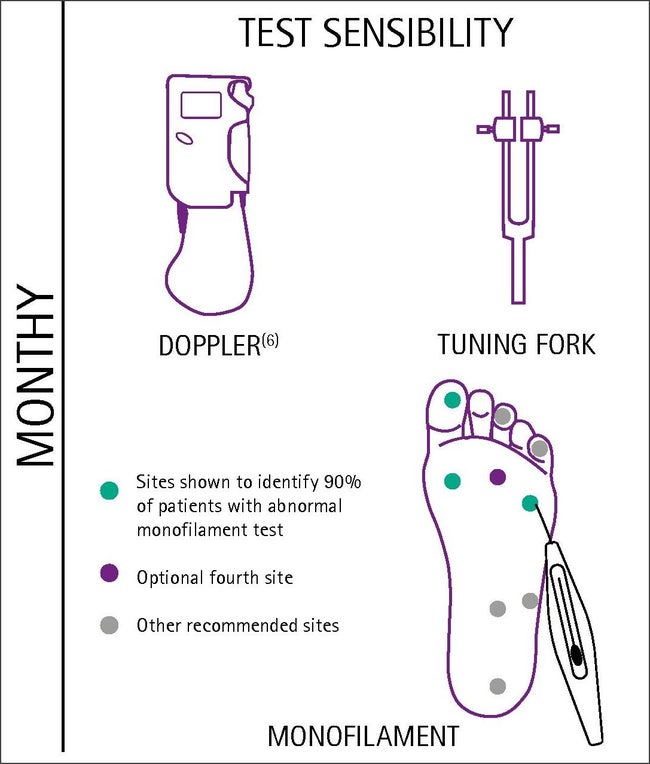The risk of developing a diabetic foot ulcer
25% of people with diabetes will develop a diabetic foot ulcers during their lifetime(1). The risk of developing a diabetic foot ulcer increases with the duration of the diabetes. The top priority in treating the diabetic foot syndrome is to avoid ulceration and amputation.
You as diabetic patient and your family should be informed about correct implementation of measures designed to decrease the risk of diabetic foot ulcers (DFU) and associated complications.
Practical advice for patients and patient’s family
Adapt your lifestyle to prevent DFU
- Maintain an appropriate blood glucose control
- Maintain blood pressure control
- Lipid management and diet discipline
- Skin care (cream/hydratation)
- Smoking cessation
- Physical activity is highly recommended: You should walk every day
Visit your doctor on a regular basis
- There are different methods of sensibility tests to help preventing the development of DFU.
Tips concerning nail and skin care to prevent DFU
- Wear wide, comfortable and cushioned shoes to avoid internal friction
- Wear seamless cotton socks
- Wash feet daily with warm/cold water and an acidic soap
- Inspect the feet daily for early signs of lesions (heels, plantar and interdigital zones)
- Carefully dry by blotting or patting (avoid friction)
- In case of dry skin, calluses, and skin cracks: apply emollient/hydrating creams
- Calluses should ideally be treated by a podiatrist, avoiding the use of keratolytic solutions
- Nails should be cut straight – better to use a nail file
- Never walk barefoot on any kind of surface
- Avoid use of hot packs or electric warmers to prevent risk of burns
Treatment of Diabetic foot ulcers
The treatment of diabetic foot ulcers is aimed at preventing infections and providing an optimal wound healing environment. If a diabetic foot ulcer is suspected, an urgent referral and assessment is vital as a delay in diagnosis and treatment increases morbidity and mortality and can contribute to a higher amputation rate.
Once the DFU has healed, it is important to prevent recurrence or development of a new DFU.
If your are a health care professional please refer to Prevention & Treatment of DFU.
References:
(1) Singh N, Armstrong DA, Lipsky BA. Preventing foot ulcers in patients with diabetes.JAMA 2005;293:217-28
(6) International Best Pratice Guidelines : Wound Management in Diabetic foot Ulcers. Wound International, 2013. Avalaible from: www.woundsinternational.com
(7) Wounds UK. Best Pratice Statement : Ankle brachial pressure index (ABPI) in pratice. London : Wounds uk, 2019. Avalaibe to download from : www.wounds-uk.com
(8) From Complex to Closure : Diabetic Foot Ulcer Assessment and Management Copyright © 2018 WoundSource & Kestrel Health Information, Inc. All rights reserved. www.woundsource.com/practice-accelerator





